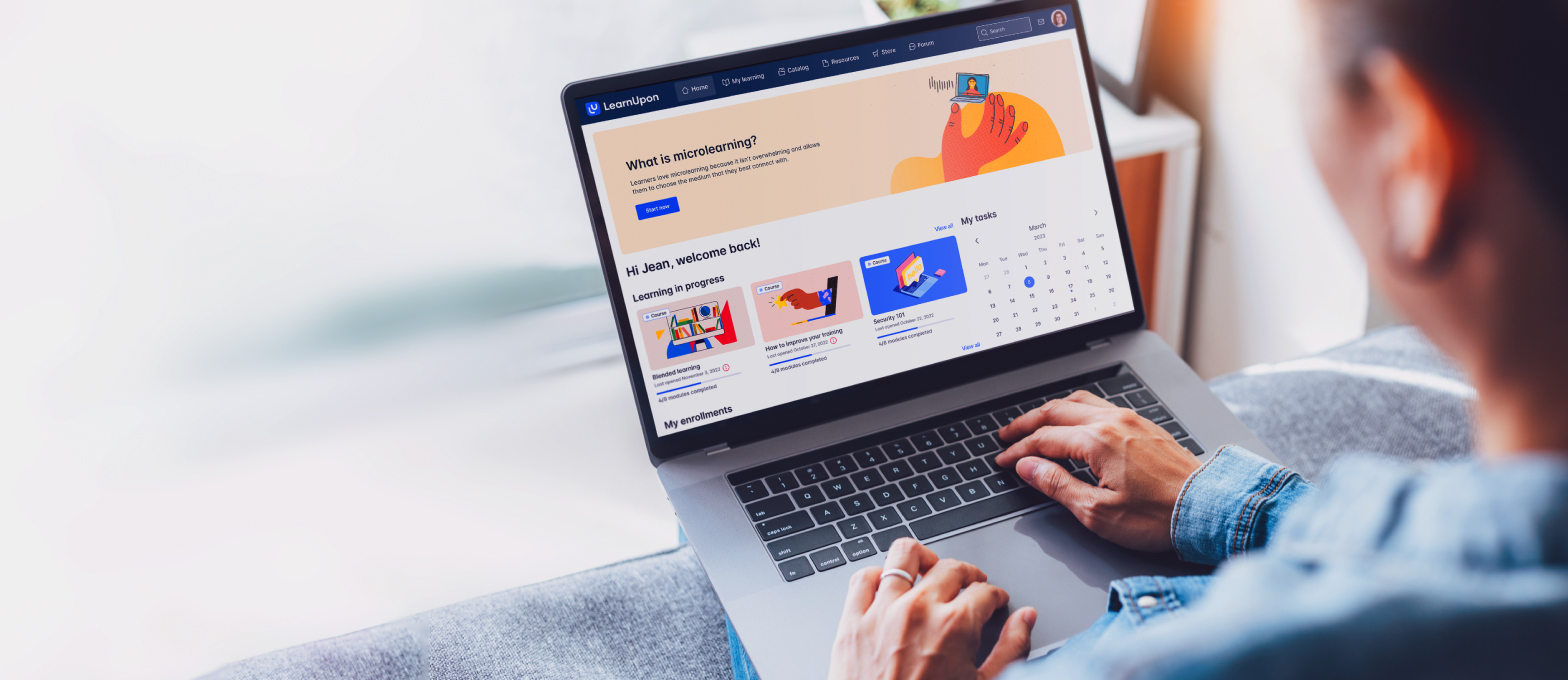
4 min reading time
Accessible LMS Design at LearnUpon: Our Journey Toward an Inclusive Platform
Accessibility should never be just a box to tick. It’s a fundamental part of creating great learning experiences in an accessible LMS. At LearnUpon, this is something we take to heart. Accessibility is woven into our design principles and guides every decision we make when building our products.
Regulations like the European Accessibility Act and the Americans with Disabilities Act play an important role in advancing inclusivity and preventing discrimination. They give us benchmarks to work toward, but at the core, our real motivation is simple: every learner deserves an experience that’s welcoming, inclusive, and free from barriers.
Why Accessibility Matters
Accessibility is about designing for the full spectrum of human diversity. For us, that means making sure our platform works for everyone; whether someone has a permanent disability, is recovering from an injury, or is simply facing everyday barriers, like learning on a noisy commute.
Through experience, we’ve seen how small, thoughtful design changes make a big difference. Something as simple as adding audio descriptions or ensuring an interface is fully navigable without a mouse can transform someone’s ability to learn and engage. Accessibility benefits all of us: everyday scenarios, like using a website with one hand or in bright sunlight reveal how design often assumes a “typical” user. Challenging these assumptions creates more flexible, inclusive experiences for everyone.
LearnUpon’s Approach to Building an Accessible LMS
To make accessibility part of every learner’s experience, our Product Design team follows the Double Diamond framework, a popular design process—Discovery, Delivery—with an extra step: Learning. This approach keeps accessibility front and center, ensuring it shapes everything we do rather than being an afterthought.
Discovery: Laying the Foundation
Every product we build starts with the Discovery phase, where we focus on understanding the problem, the users, and the context before any design or development begins. And, even in this stage, accessibility plays a big part.
Once we start “discovery” of a new feature, here’s what we do:
- Use tools like Figma, an interface design tool, to check color contrast and other accessibility elements before development begins.
- Talk directly to customers to understand their real needs and experiences.
- Do vigorous testing to catch issues early across browsers and devices.
We also carry out an accessibility audit. It helps us see how we’re doing and highlights where we can improve.
Accessibility isn’t just about tools or audits—it’s about people and culture too. That’s why we invest in training across the team and make accessibility a central part of our core design principles.
Delivery: Building with Accessibility in Mind
Next up is delivery, where the product moves from ideas and designs into a working solution. It’s where we validate concepts into a real product, while keeping quality, usability, and, of course, accessibility in focus.
Here, accessibility requirements are integrated into our roadmap, design reviews, and quality assurance processes, so nothing slips through the cracks.
Additionally, to meet our accessibility standards, we’ve implemented a couple of key initiatives at this stage:
- Product Voice Guidelines: Helping learners understand content, particularly those with reading difficulties.
- Accessibility-by-Default Design System: Thoughtful attention to color contrast, spacing, and focus states for users with visual impairments.
With each product release, we also include accessibility updates. For example, enhanced keyboard navigation with helpful on-screen instructions and ARIA labels (Accessible Rich Internet Applications labels) make content easier to navigate for people using screen readers or other assistive technologies.
By focusing on accessibility throughout design and development, every update makes LearnUpon more inclusive.
Learning: A Feedback Loop That Drives Progress
Launching a product isn’t the end of our accessibility work. Instead, it’s where LearnUpon’s unique learning step really comes into play.
We believe the best way to know we’re getting accessibility right is by hearing directly from the people who use our platform: our customers. We gather their feedback through LearnUpon Engage—our customer community—as well as one-on-one calls and targeted surveys.
This feedback goes straight to our design and development teams, helping uncover pain points we might not have anticipated, validate our decisions, and continuously refine the platform. By keeping this loop alive, we make the experience smoother, more intuitive, and more inclusive for every learner.
LearnUpon’s Accessibility Journey Toward an Inclusive LMS
Today, LearnUpon meets most WCAG 2.2 AA standards, and we’re proud of the progress we’ve made. But we know there’s more to do. We’re actively working toward full compliance across the entire learner experience by the end of 2025, a big step to make our platform truly usable for everyone.
This means high-contrast colors, consistent navigation, screen reader compatibility, full keyboard access, and layouts that adapt to any device. With 16 percent of the world’s population living with a disability and most major websites still failing WCAG standards, this work is both significant and urgent.
We also know that accessibility isn’t a one-time task—it’s an ongoing journey. Reaching WCAG 2.2 AA compliance is a major achievement, but our bigger goal is continuous improvement. By building accessibility into every stage of our process and actively listening to feedback from our community, we’re creating not just a platform, but a culture where everyone feels included.
At LearnUpon, learning is for everyone, no matter their ability, background, or environment. Everyone—from designers and developers to course creators, customers, and partners—can help bring this vision to life. By embracing inclusive practices, sharing feedback, and working together on improvements, we can raise accessibility standards and build a learning environment where every user can thrive.



